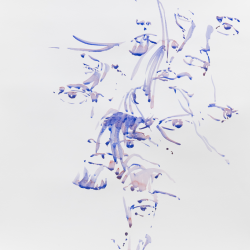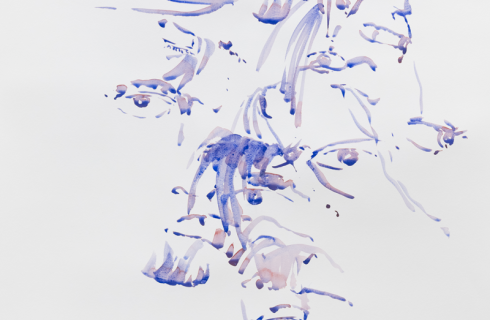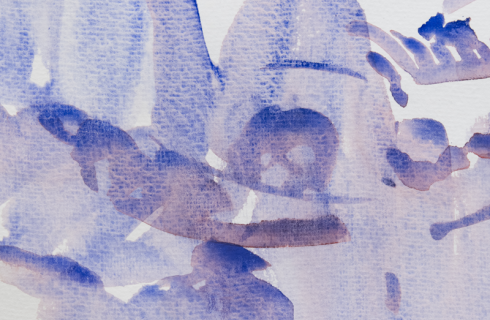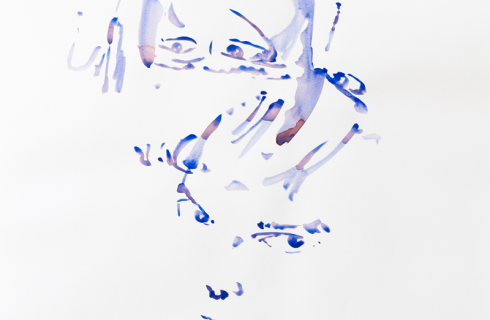



Martin Spitzweck
Martin Spitzweck draws with ink or watercolour on large sheets of paper. This results in almost breathy, poetic brush drawings that move between ephemeral fleetingness and concentrated devotion.
A strong fiery red is characteristic of a series of works in which Martin Spitzweck drew mainly plants, trees and animals during the Corona period, and which seemed to him to be appropriate to the drama of this situation.
This has now changed, both in terms of the choice of colours and the subject matter: The starting point for his drawings in this exhibition is often a photo that he spontaneously takes with his mobile phone while on the move: mostly of people in underground trains and trains, in places of transition.
The drawings often appear as if the artist had captured these encounters with what was available to him at the moment - plum-red fruit juice on paper, a spontaneous, rapidly dwindling drawing in the sand; and yet they bear witness to an intimate, concentrated moment of perception that multiplies on the paper and escalates in a cascading, complex composition into a valid picture puzzle of this encounter.
Despite his virtuosity as a draughtsman, Martin Spitzweck is not interested in creating a lifelike portrait, but rather in the subject matter, in terms of content, visualisation and far beyond: the gaze. Initially, it is the artist's gaze that triggers the shutter. But then it is above all the gaze of the other person with whom the viewer is confronted: SEE ME. This gazing eye is multiplied in Martin Spitzweck's works - and these eyes often reflect conflicting feelings, such as fear and longing, devotion and shyness, doubt and confidence. Every gaze is the gaze of a living creature and its inescapable individuality, waiting to be recognised.
In the drawings, the gaze detaches itself from the individual, becomes the subject of the picture itself, meanders across the picture surface, looks out of the picture, begins to embrace other gazes, to dance with other gazes, unites with them to form new formations, piles up into acrobatic pyramids of gazes, withdraws into a quietly observing pose, submits to the style of the brush to the point of renouncing presence, leaves the decision about empty spaces, about form and the dissolution of form to the draughtsman - and yet remains a gaze, longing, appraising, questioning, devoted - just as the artist's gaze, which we do not see except in what we see, is devoted, devoted, full of love.
In the end, what we are left with in each of these drawings is a work of art that is so much more than our eyes can grasp, that defies description and analysis, and that each of us can only try to understand for ourselves.
In het kader van de uitwisseling tussen IDFX en Die Neue Galerie Landshut in Duitsland pres
